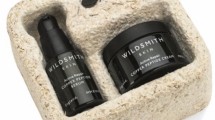Abstract
In the circular economy, reduction of the vigorous usages of nonrenewable resources is becoming the leading scenario. Fungal mycelium is the vegetative part of fungus consisting of a number of filamentous fibers that extend out of the fungus and is considered to be natural, fast growing, safe, and renewable. The ability to form self-assembling bonds helps them to grow quickly on biological and agricultural wastes and produce miles of thin fibers which bind to the substrate to form a strong biodegradable material and can easily be shaped for the production of packaging materials, architecture, and various new designed objects. With the benefit of cost-effective raw materials and sustainable substitute to polystyrene like hazardous synthetic materials, this mycelia-based material is becoming the material of choice. This chapter reviews the present scenario of technology-based mushroom cultivation using wastes generated from the agricultural industries and also focuses on a variety of utilizations as an alternative replacement for synthetic polystyrene.
Access this chapter
Tax calculation will be finalised at checkout
Purchases are for personal use only
Similar content being viewed by others
References
Abhijith R, Ashok A, Rejeesh C (2018) Sustainable packaging applications from mycelium to substitute polystyrene: a review. Mater Today Proc 5(1):2139–2145
Appels FV, Camere S, Montalti M, Karana E, Jansen KM, Dijksterhuis J, Krijgsheld P, Wösten HA (2019) Fabrication factors influencing mechanical, moisture-and water-related properties of mycelium-based composites. Mater Des 161:64–71
Ashok A, Rejeesh C, Renjith R (2016) Biodegradable polymers for sustainable packaging applications: a review. IJBB 1(11)
Attias N, Danai O, Ezov N, Tarazi E, Grobman YJ (2017) Developing novel applications of mycelium based bio-composite materials for design and architecture. Proceedings of building with biobased materials: best practice and performance specification, 6–7 September, pp 76–77
Boswell GP, Jacobs H, Davidson FA, Gadd GM, Ritz K (2003) Growth and function of fungal mycelia in heterogeneous environments. Bull Math Biol 65(3):447
Bruscato C, Malvessi E, Brandalise RN, Camassola M (2019) High performance of macrofungi in the production of mycelium-based biofoams using sawdust—sustainable technology for waste reduction. J Clean Prod 234:225–232
Containers P, Good ND (2016) Documentation for greenhouse gas emission and energy factors used in the waste reduction model (WARM)
De los Rios IC, Charnley FJ (2017) Skills and capabilities for a sustainable and circular economy: the changing role of design. J Clean Prod 160:109–122
Farmer N (2013) Trends in packaging of food, beverages and other fast-moving consumer goods (FMCG): markets, materials and technologies. Elsevier
Geyer R, Jambeck JR, Law KL (2017) Production, use, and fate of all plastics ever made. Sci Adv 3(7):e1700782
Ghazvinian A, Farrokhsiar P, Vieira F, Pecchia J, Gursoy B (2019) Mycelium-based bio-composites for architecture: assessing the effects of cultivation factors on compressive strength. In: The eCAADe and SIGraDi Conference, University of Porto, Portugal
Girometta C, Picco AM, Baiguera RM, Dondi D, Babbini S, Cartabia M, Pellegrini M, Savino E (2019) Physico-mechanical and thermodynamic properties of mycelium-based biocomposites: a review. Sustainability 11(1):281
Haneef M, Ceseracciu L, Canale C, Bayer IS, Heredia-Guerrero JA, Athanassiou A (2017) Advanced materials from fungal mycelium: fabrication and tuning of physical properties. Sci Rep 7(1):1–11
Hopewell J, Dvorak R, Kosior E (2009) Plastics recycling: challenges and opportunities. Philos Trans R Soc B Biol Sci 364(1526):2115–2126
Iles A, Martin AN (2013) Expanding bioplastics production: sustainable business innovation in the chemical industry. J Clean Prod 45:38–49
Jiang L, Walczyk D, McIntyre G (2017) A new approach to manufacturing biocomposite sandwich structures: investigation of preform shell behavior. J Manuf Sci Eng 139(2)
Jones M, Huynh T, Dekiwadia C, Daver F, John S (2017) Mycelium composites: a review of engineering characteristics and growth kinetics. J Bionanosci 11(4):241–257
Karana E, Blauwhoff D, Hultink E-J, Camere S (2018) When the material grows: a case study on designing (with) mycelium-based materials. Int J Des 12(2):119–136
MacArthur DE, Waughray D, Stuchtey M (2016) The new plastics economy, rethinking the future of plastics. In: World Economic Forum
Miles PG, Chang S-T (2004) Mushrooms: cultivation, nutritional value, medicinal effect, and environmental impact. CRC Press, Boca Raton
Olsson S (1995) Mycelial density profiles of fungi on heterogeneous media and their interpretation in terms of nutrient reallocation patterns. Mycol Res 99(2):143–153
Rigamonti L, Grosso M, Møller J, Sanchez VM, Magnani S, Christensen TH (2014) Environmental evaluation of plastic waste management scenarios. Resour Conserv Recycl 85:42–53
Slavin K (2016) Design as participation. J Design Sci
Stamets P (2005) Mycelium running: how mushrooms can help save the world. Random House Digital, Inc., New York
Tudryn GJ, Smith LC, Freitag J, Bucinell R, Schadler LS (2018) Processing and morphology impacts on mechanical properties of fungal based biopolymer composites. J Polym Environ 26(4):1473–1483
Vendries J, Sauer B, Hawkins TR, Allaway D, Canepa P, Rivin J, Mistry M (2020) The significance of environmental attributes as indicators of the life cycle environmental impacts of packaging and food service ware. Environ Sci Technol 54(9):5356–5364
Vilaplana F, Strömberg E, Karlsson S (2010) Environmental and resource aspects of sustainable biocomposites. Polym Degrad Stab 95(11):2147–2161
Wösten HA (2019) Filamentous fungi for the production of enzymes, chemicals and materials. Curr Opin Biotechnol 59:65–70
Yang Z, Zhang F, Still B, White M, Amstislavski P (2017) Physical and mechanical properties of fungal mycelium-based biofoam. J Mater Civ Eng 29(7):04017030
Zhu W, Guo C, Luo F, Zhang C, Wang T, Wei Q (2015) Optimization of Calvatia gigantea mycelia production from distillery wastewater. J Inst Brew 121(1):78–86
Author information
Authors and Affiliations
Corresponding author
Editor information
Editors and Affiliations
Rights and permissions
Copyright information
© 2021 The Author(s), under exclusive license to Springer Nature Singapore Pte Ltd.
About this chapter
Cite this chapter
Mojumdar, A., Behera, H.T., Ray, L. (2021). Mushroom Mycelia-Based Material: An Environmental Friendly Alternative to Synthetic Packaging. In: Vaishnav, A., Choudhary, D.K. (eds) Microbial Polymers. Springer, Singapore. https://doi.org/10.1007/978-981-16-0045-6_6
Download citation
DOI: https://doi.org/10.1007/978-981-16-0045-6_6
Published:
Publisher Name: Springer, Singapore
Print ISBN: 978-981-16-0044-9
Online ISBN: 978-981-16-0045-6
eBook Packages: Biomedical and Life SciencesBiomedical and Life Sciences (R0)




